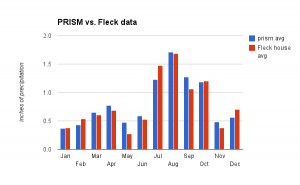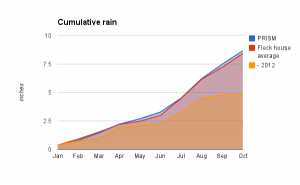A small but interesting water law/politics/policy case is emerging in northern New Mexico, involving a request by a Sangre de Cristo mountains ski area to use more water for its snow-making equipment. This is the sort of case that hinges on the withdrawal/consumption distinction – how much water a user withdraws from the system, versus how much is actually consumed.
Sipapu Recreational Development ll, LLC, which runs a small ski area, wants to use more water from the Rio Embudo watershed to make snow. The watershed collects snowmelt from the Sangres, the southern branch of the Rocky Mountain spine that slices down into New Mexico past Taos before petering out east of Santa Fe. The Embudo eventually flows into the Rio Grande. To make up for the effect of its snow-making on downstream flows, the folks at Sipapu want to buy water rights from the San Juan-Chama project, which imports Colorado River Basin water beneath the continental divide and dumps it into a different Rio Grande watershed – the Chama, which flows in from the west.
It’s essentially removing water from one part of the basin, and replacing it with water in a distant part of the same basin. The basin in its entirety is thus made whole, the ski area operators’ application contends. But the ensuing argument will be over whether that is enough.
If the math in the Sipapu application is right, the Rio Grande will eventually be made whole – water used up on the ski slopes will eventually be replaced downstream. But the folks in the middle – users of the old acequia systems in the Dixon/Embudo Valley – have a couple of problems with this.
La Jicarita, which covers northern New Mexico, posted the farmers’ protest, filed last week with the New Mexico Office of State Engineer. Their argument is twofold. First, they question the withdrawal/consumption calculation used in Sipapu’s calculation. The ski area people want to take 350 acre feet of water during the early ski season to make snow. Based on their “consumptive use” calculation, the Sipapu application, as I understand it, assumes about 28 percent of that is “consumptive”, evaporating or sublimating, lost to the system, which the rest of the water will eventually flow past the farmers’ headgates downstream. As a result, they argue that they only need to “offset” 100 acre feet of 350 acre feet of water they are using. From the protest:
We … question the figure of 28% consumptive percentage. To our knowledge, that figure was derived from a Colorado ski area study in 1990. The altitude and latitude there do not correspond to the geographic characteristics of Sipapu, and the climate was different 22 years ago. We are in a climate phase of increasing temperature and decreasing humidity. Unless the consumptive percentage is calculated currently, and specifically in Sipapu or in a place similarly situated in altitude and latitude, we do not regard the figure as valid.
Secondly, the full withdrawal matters here as well. Water not consumed in the rural agricultural mountain hydrologic system is nevertheless water being “used” in a very real and important sense. Again, from the protest:
Despite the published comments of Sipapu’s General Manager, John Bradley, the river is not “just flowing down the canyon in the late fall”. We are still irrigating in November. We are planting overwintering crops like garlic, and cover crops, and irrigating our orchards. In addition, the river is providing our drinking and household water from the saturation zone around the Rio Pueblo-Rio Embudo waterway. The 350 acre-foot withdrawal in November and December will diminish our irrigation flows, make the saturation zone drier and diminish the plume of underground water from the river which replenishes our wells. Wells going dry are already a problem in our area, and this action would exacerbate the problem. In addition, the drier saturation zone will need more water in the spring to re-saturate it, and that will reduce river flows available for irrigation.
For more background, Kay Matthews at La Jacarita has an excellent overview of the issues.



